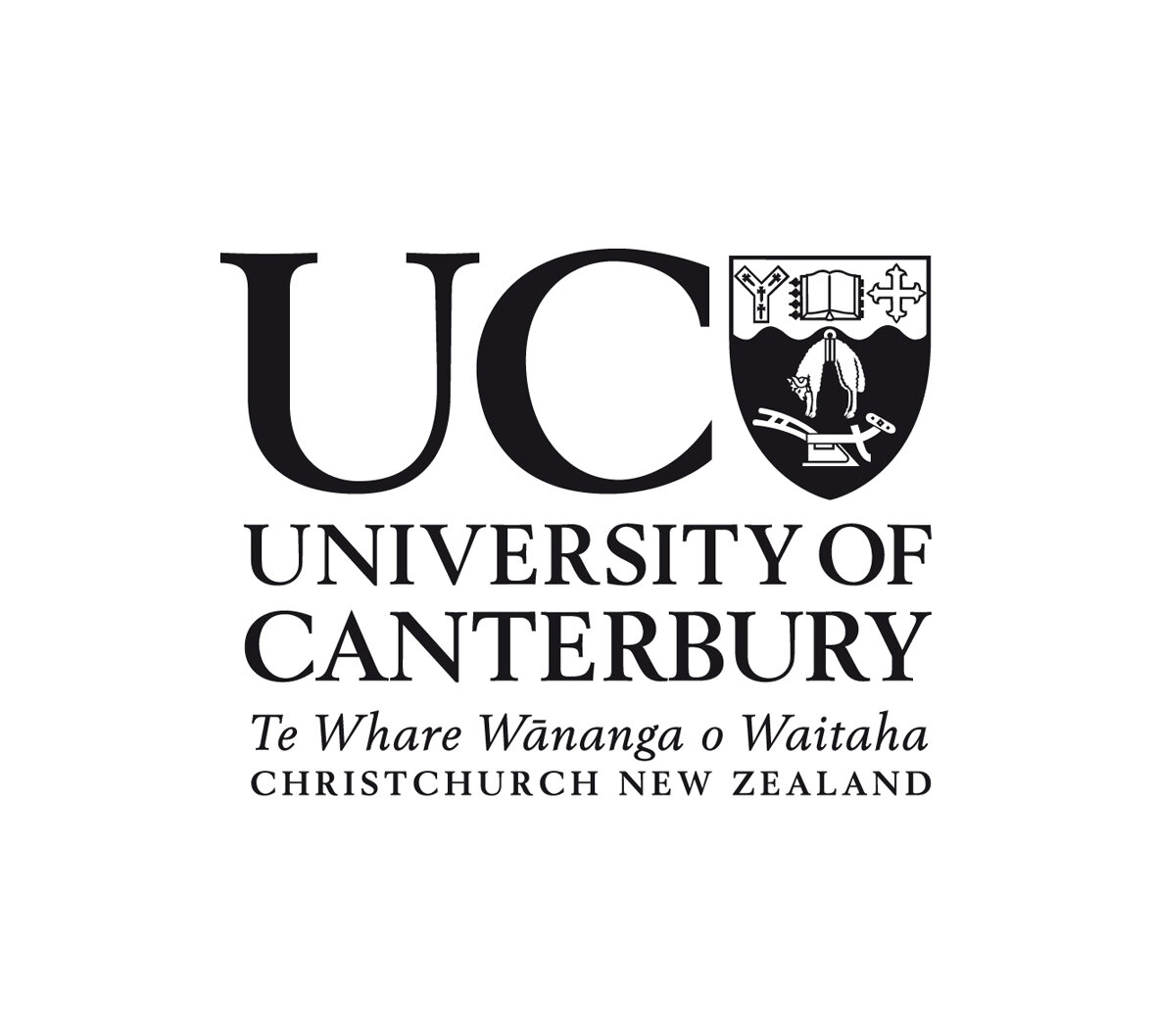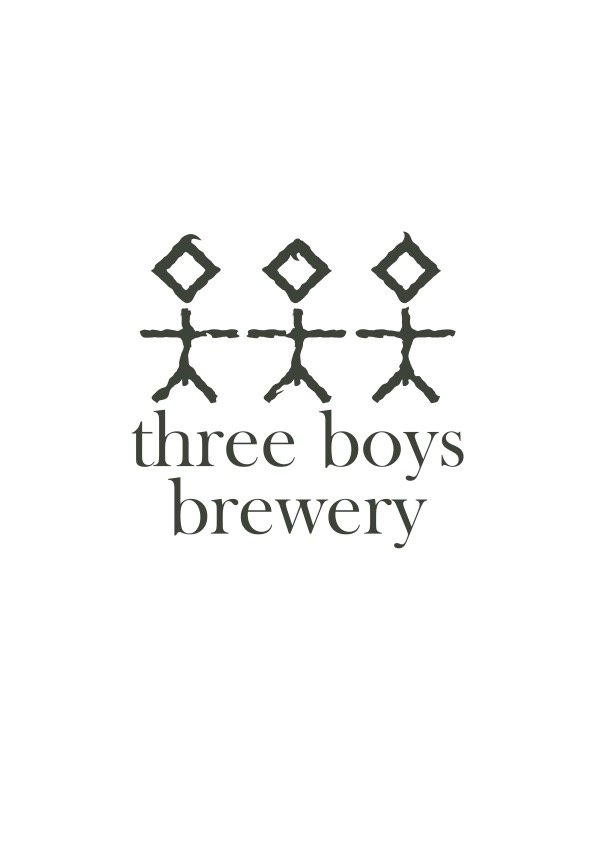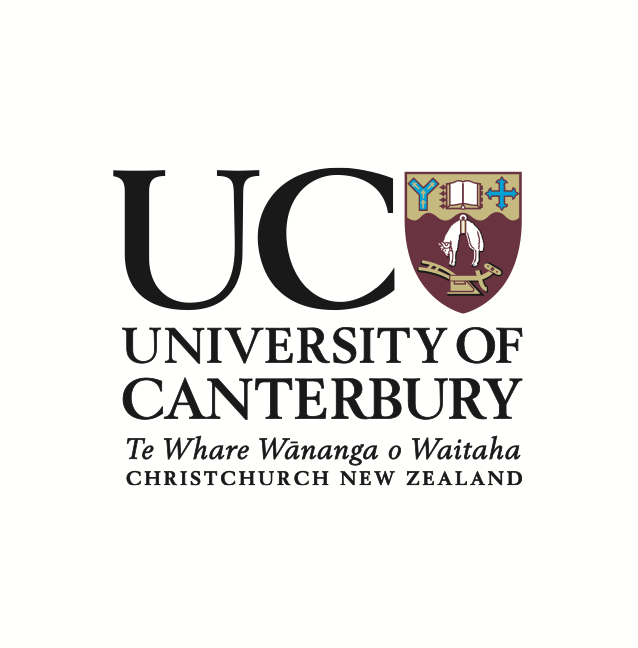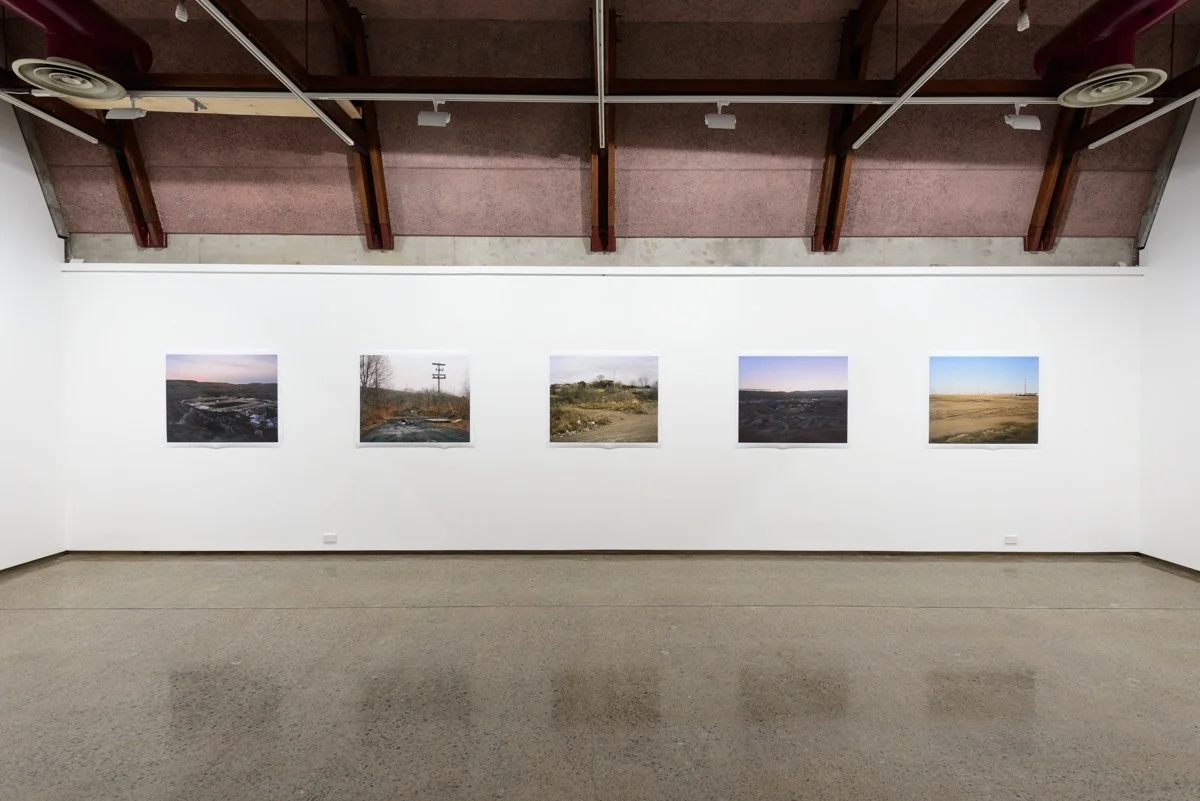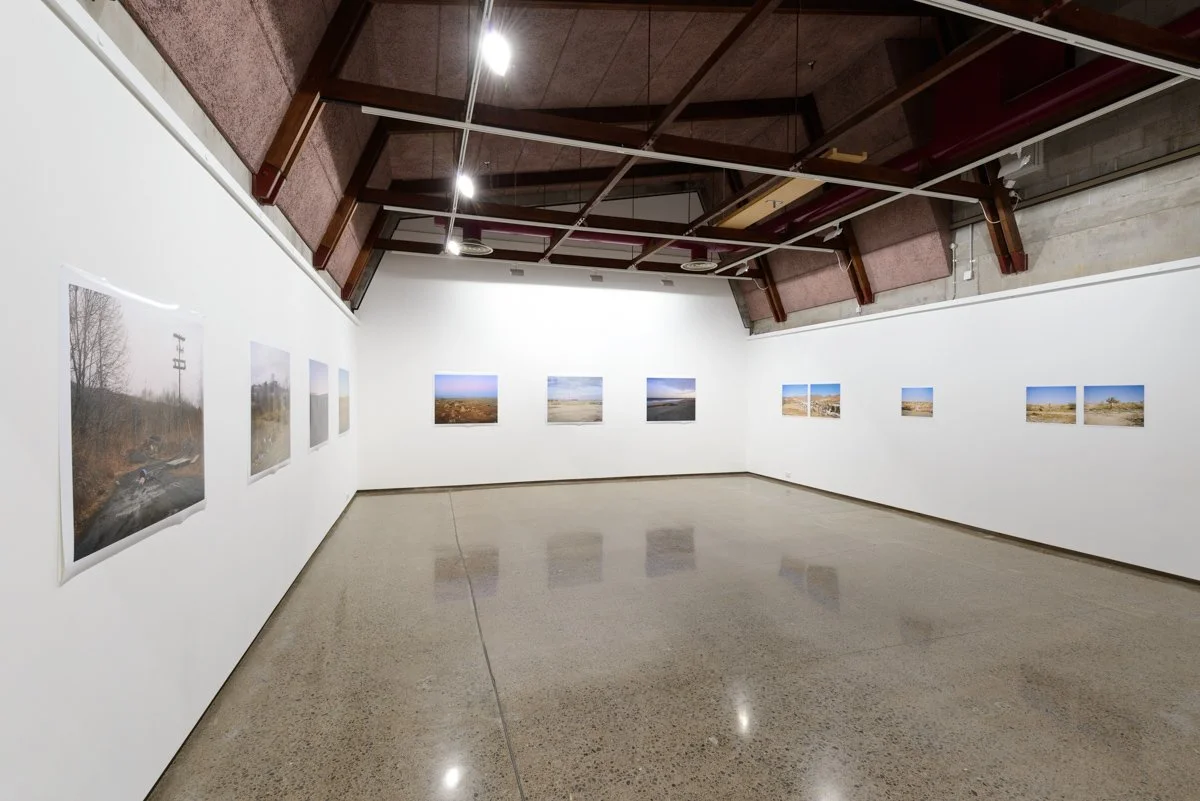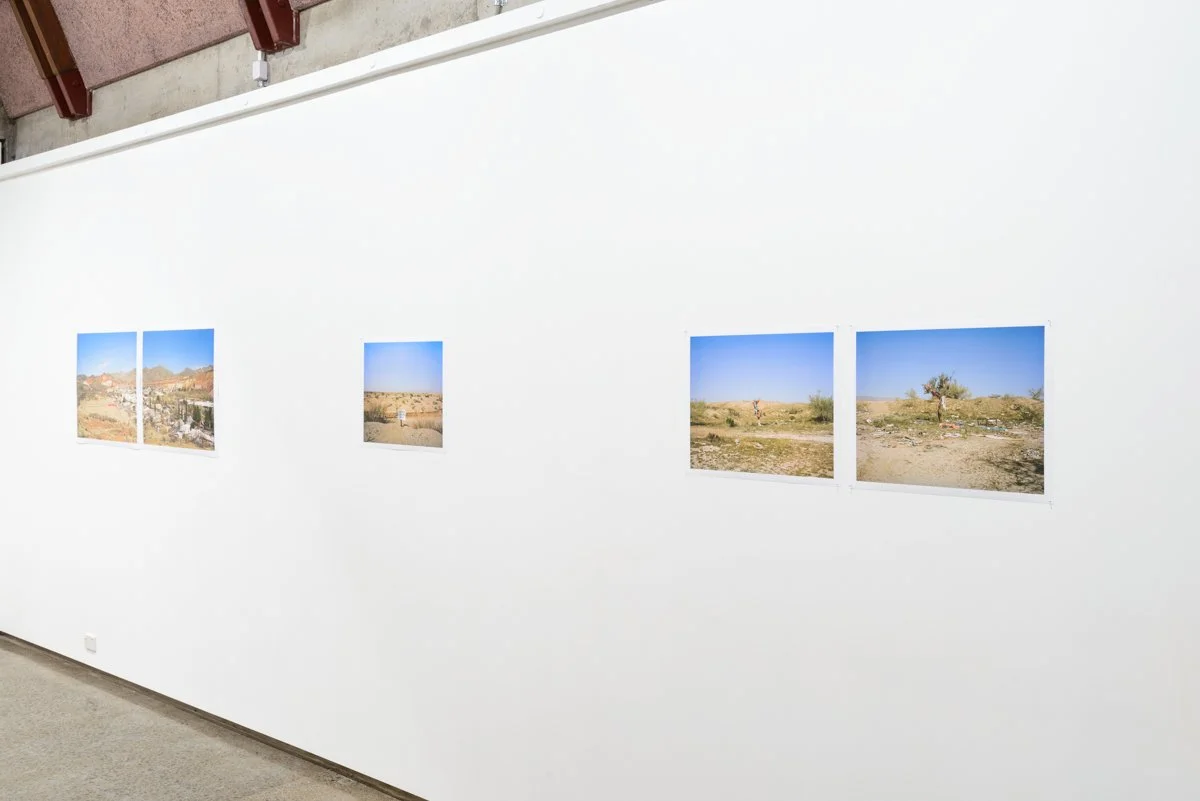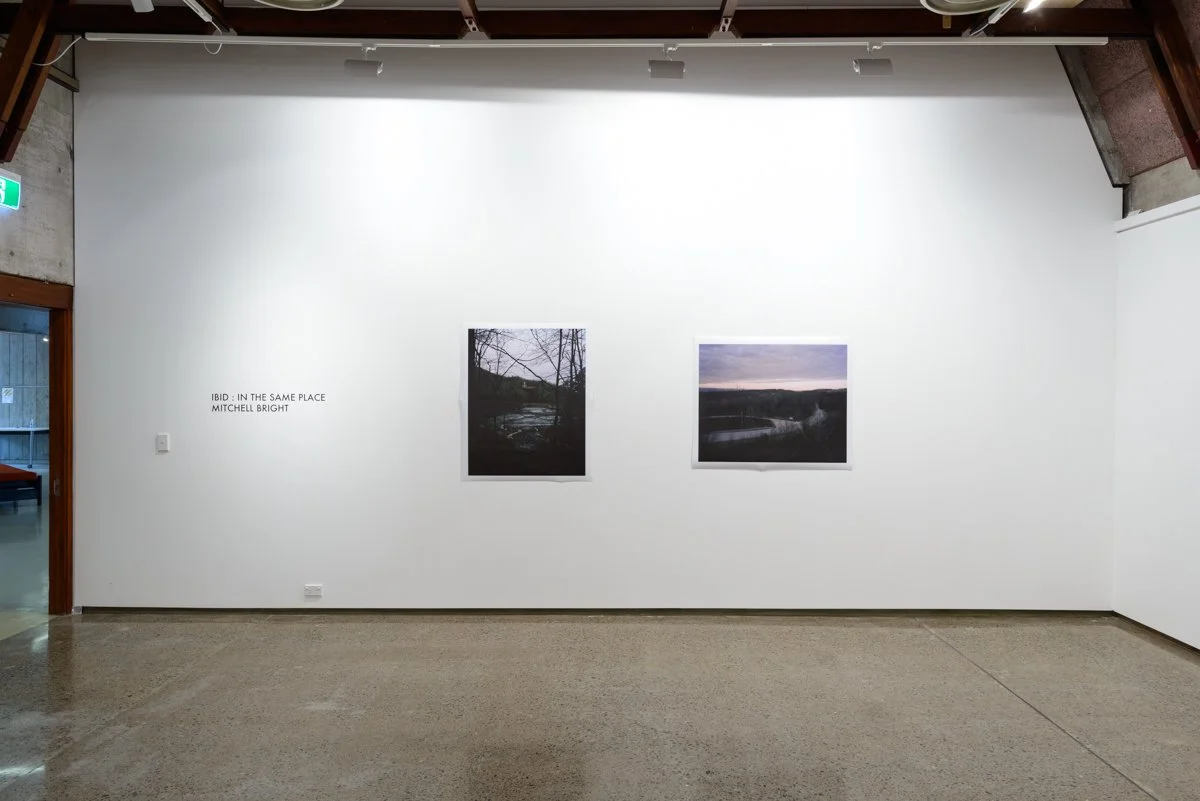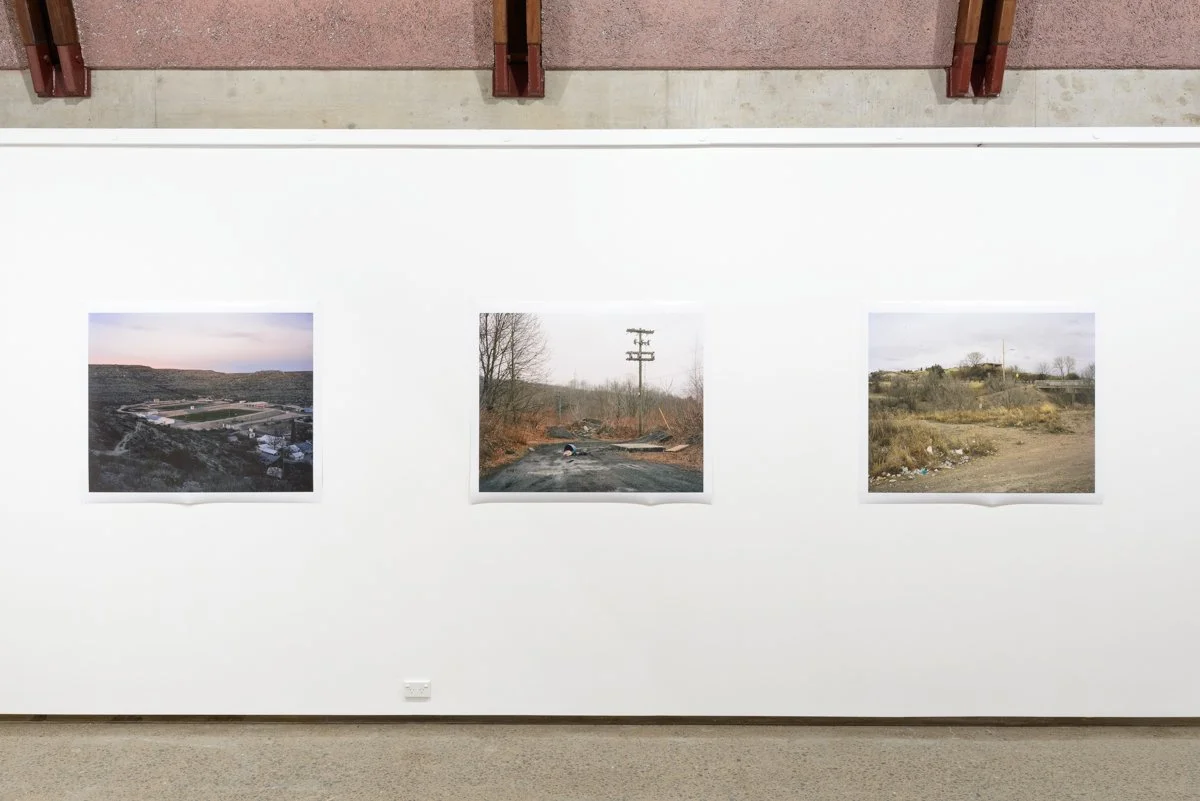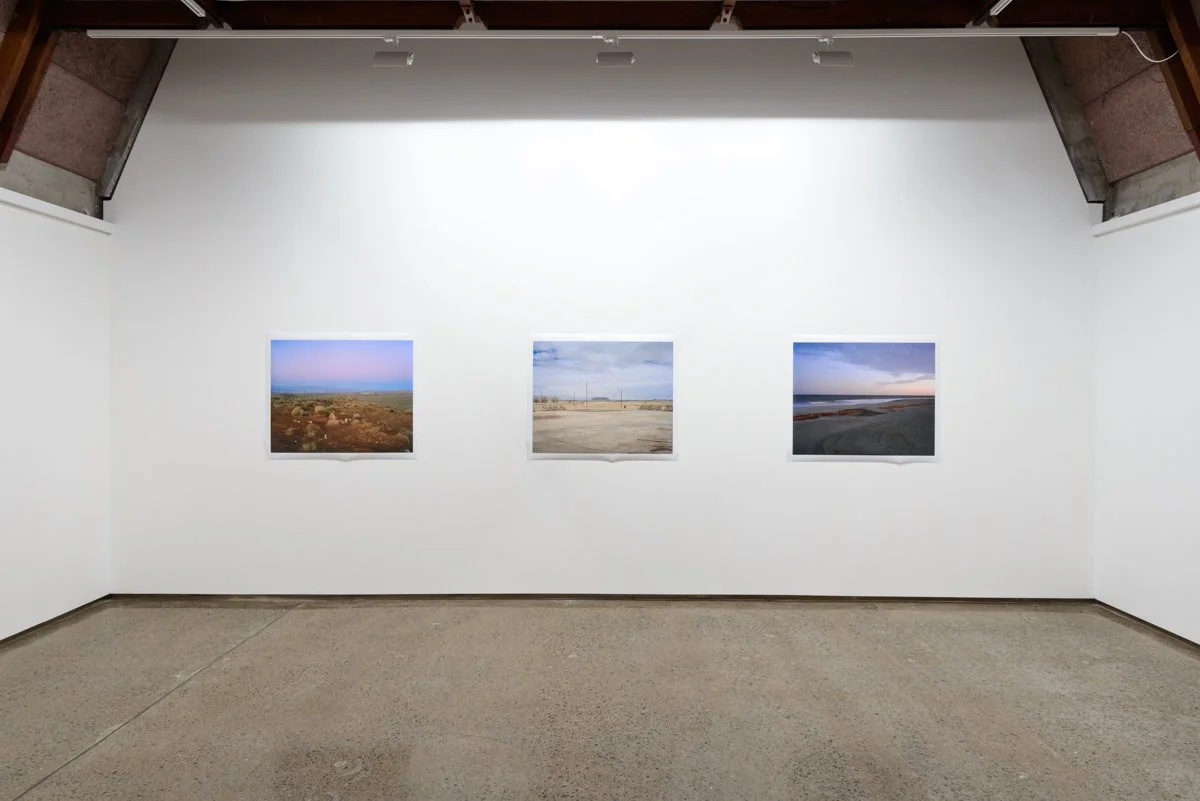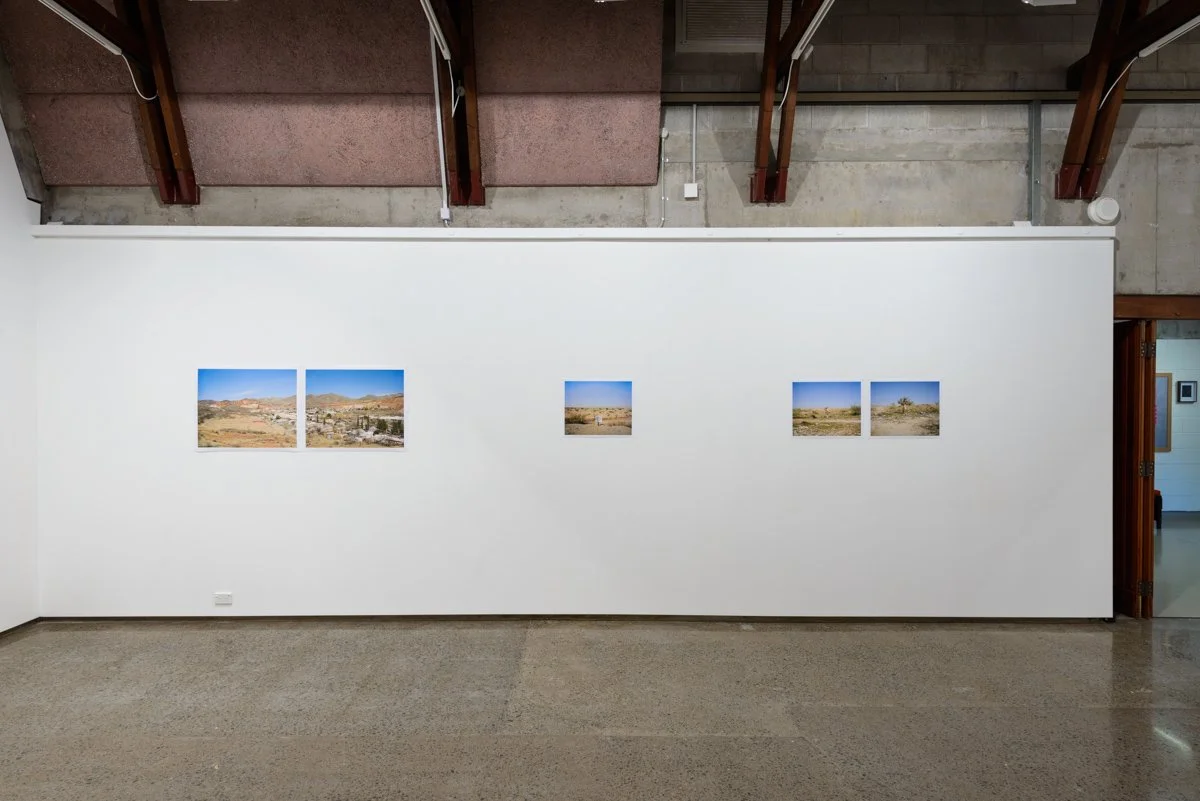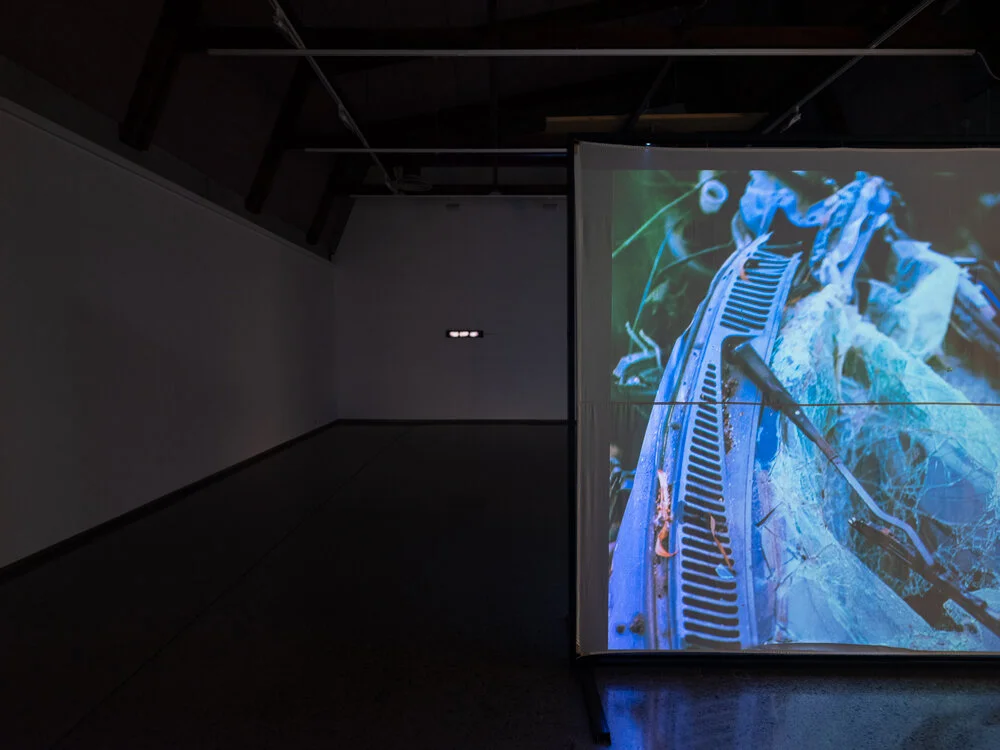Mitchell Bright | Ibid: In the same place
"Driven by the idea of the exotic and a desire to explore the places I had stared at countless times through the lenses of some of my biggest influences, I travelled across the United States, from East to West. Whilst the images I made are of places I had never physically visited before, they felt very familiar. I was not able to see the landscape as it was, rather as a series of pictures asking to be retaken.
Trying to capture what this place meant to me felt like walking a tightrope. My visual style and interests are idiosyncratic, but undoubtedly the way I see and think about photography has been heavily influenced by the photographers I have studied – mostly American greats who inspired a sense of possibility and passion within the medium. In that sense, during my time in the U.S. I regularly had to resist the urge to make obvious images like I had seen before. I was very aware of how difficult it can be to make work in America as a foreigner that is wholly original.
Ibid : In the same place is an exhibition within which I have tried to reconcile this influence in order to more clearly see myself within it." - Mitchell Bright
Mitchell Bright is a Christchurch based artist who graduated from the Ilam School of Fine Arts in 2017 with a Masters degree in Photography. Bright’s practice delves into areas of fine art and documentary photography.
Found Bearings | Ali Nightingale, Rachel Sleigh and Samantha Towse
Found Bearings is an exhibition that attempts to reimagine mapping processes through the embodied experience of our environment. The artists Ali Nightingale, Rachel Sleigh and Samantha Towse have drawn from a shared interest in locating the self through rigorous observation of space – both fabricated and found, ephemeral and long lasting.
Found Bearings expands upon each artist's personal affinities with the rural and urban landscape of Canterbury, connecting threads of temporality, permanence, and motion in an attempt to explore alternative understandings of the space we reside in.
Ali Nightingale, Rachel Sleigh and Samantha Towse are all currently studying towards an Honours degree in Sculpture at the Ilam School of Fine Arts.
This is to remind you where you came from | Moana Lee, Ellie Waters, and Janneth Gil
This is to remind you where you came from is a group exhibition including works by three Ilam School of Fine Arts photographers, Moana Lee, Ellie Waters, and Janneth Gil.
Each artist explores their own personal narrative, looking into the physical and emotive spaces of their past and present and how those spaces have come to define who they are today.
All three artists are studying towards a postgraduate degree in Photography at the Ilam School of Fine Arts; Moana Lee (Honours), Ellie Waters (Postgraduate Diploma) and Janneth Gil (Masters).
akin | Anna Welham and Melissa Wong
Translate, translating, translated. Communication does not just reside in languages.
Rather, it has the ability to exist in multiple forms at once. Not only fascinated with the synergetic nature of transmission, akin peers into the grey area of translation which hosts both the accuracy and blunders in conversation. akin traverses the multiplicity of structures and systems embedded in language as it is a primary tool to externalise many complex inner mechanisms in order to be understood and connect with other human beings.
akin features work from Anna Welham and Melissa Wong, a Welham and Wong collaboration and curated works from Ilam School of Fine Arts students, Toni Cuthill, Jessica Hamilton and Jack Larkins. akin seeks to open up the guiding parameters of language. In doing so, it begins to sift through both the precise nature and slippage of language by pushing linguistic boundaries.
Re Surface | Barbara Boekelman, Tracy Hay and Chloe Summerhayes
Re Surface is an exhibition enquiring into painterly abstraction, expression of colour, figuration and form through the works of Barbara Boekelman, Tracy Hay and Chloe Summerhayes, three Post-Graduate Ilam School of Fine Arts painters. The works all speak to the physical act of painting allowing the paint to dictate the rules.
Chloe Summerhayes process-based works arrive somewhere in between figuration and abstraction.
In Barbara Boekelman’s work, a playful approach to colour and shape belies symbolic and descriptive beginnings. Boekelman uses representative imagery as a starting point for her bodily scaled paintings which gradually surrender to a non-representational sinuous fusing of colour and form becoming an exercise in expressive abstraction. This almost chaotic approach is tempered by her ability to let the paint settle before allowing the work to continue and develop toward abstraction.
The three-dimensional sculptural paintings by Tracy Hay are created by hanging lines of poured paint. Each coloured line is different to the next, demonstrating the imperfect touch of hand. The precarious nature is also key to the intuitive way the painted works are constructed. Always unpredictable, Tracy’s works have intention but without rigidity and the work is often left open to chance. The physical act of creating these works present an arbitrary outcome which allows each work to move and respond to its atmosphere at will.
Emma Wallbanks | Morphia
“The road is stretched between the sea through the hills and the border of the town, where a steel factory mines a wreck of cars. Here, the water heaves and suctions at the foot of the cliff, a forcible limpet inhaling a lung of dark foam, and turning and turning, turning, turning. And turning and turning, as a black form rotates and dilates, swelling over a rocky floor, and shards of glass rain from the sky with the impact of metal on earth there, and they flicker like a shoal as they slam against the shoreline. The road from here to there is built by a shared language of collision. I imagine it like a snaking onomatopoeic highway.”
“Emma Wallbanks’ exhibition Morphia elaborates this semiotic proposition: a sacred dichotomy formed though the opposition of two planes. To place two sets of things alongside each other, as Wallbanks does, is to create a channel that can be conceptually inhabited by the viewer, a participant in the dialogue across distinct imagery. In Morphia, the material of these two planes is constituted by medium-format photographs of a scrap metal yard and moving images of regurgitating sea water. These projections are enclosed by large welded frames, installed perpendicular to each other, but mirroring the entrance to the gallery space.” - Jane Wallace
True Love: A Tribute to Grant Lingard
Grant Lingard was many things: from a West Coast mining family, he was a snappy dresser, an avid collector of everything from action-toy figurines to records, a Punk Disco dancer, a storyteller, an instigator of the Christchurch Artists’ Collective, companion to his black cat Black Cat, a graduate of the Ilam School of Fine Arts programme, and, of course, a gay man at a moment when attitudes towards homosexuality, and the law, were changing.
If he has the distinction of being considered one of our leading gay visual artists, he was also a victim of the tragedy that struck the community in the 1980s: AIDS. With his death Aotearoa New Zealand lost an artist and art activist of significance too soon, his legacy left barely revealed. Perhaps this is a failure to acknowledge “queer art heroes”, or because the 1980s are easy to forget, or because his work had ephemeral, feral qualities that make its collection and preservation difficult.
Grant’s art alongside works from Bronwyn Takle, Diane Miller, Gary Freemantle, Gina Ferguson, Graham McFelin, Grant Takle, Jeremiah Boniface, Jessica Douglas, Julian Holcroft, Michael Armstrong, Paul Dew, Paul Johns, Paul Rayner, Richard Reddaway, Ruth Watson, Sara Ayad, Sandra Bushby, Seraphine Pick, Simon Morris, Teri Johnson, Terry Urbahn and Trevor Fry. Catalogue essays by David Herkt and Peter Derksen.
Annie Mackenzie | Sundries
Annie Mackenzie was the 2020 recipient of the Olivia Spencer Bower Fellowship, and her exhibition Sundries marks a return to Canterbury where she graduated with a Bachelor of Fine Arts in Sculpture from Ilam School of Fine Arts in 2009.
Since this time Annie has established an artistic practice as a weaver, looking back to older ways of making whilst proposing an alternative vision within the medium. While her work is recognised as part of New Zealand’s contemporary art oeuvre it also draws from and contributes to the weaving and fibre craft communities and traditions in this country. In 2016 she was awarded the Creative Fibre, New Weavers Award, and in 2019 was the first weaver to be Artist in Residence at Tylee Cottage in Whanganui. Her work has been exhibited in solo and group shows throughout Aotearoa New Zealand. Annie currently lives and works in Granity, Te Tai o Poutini.
